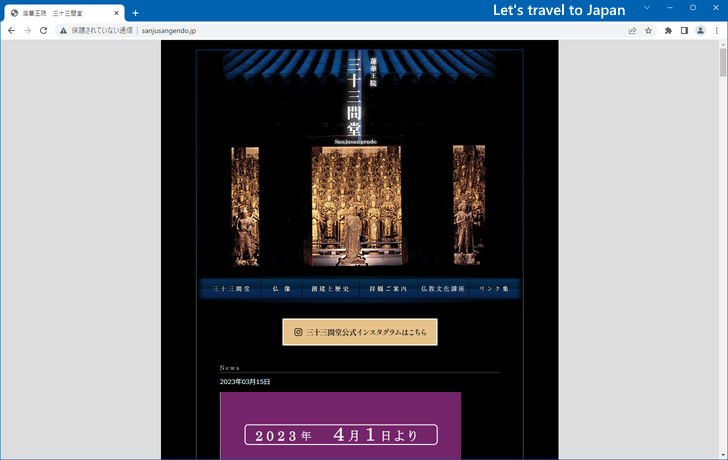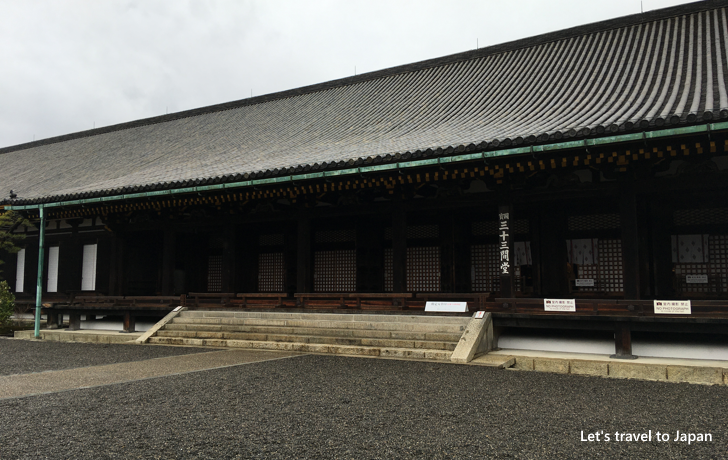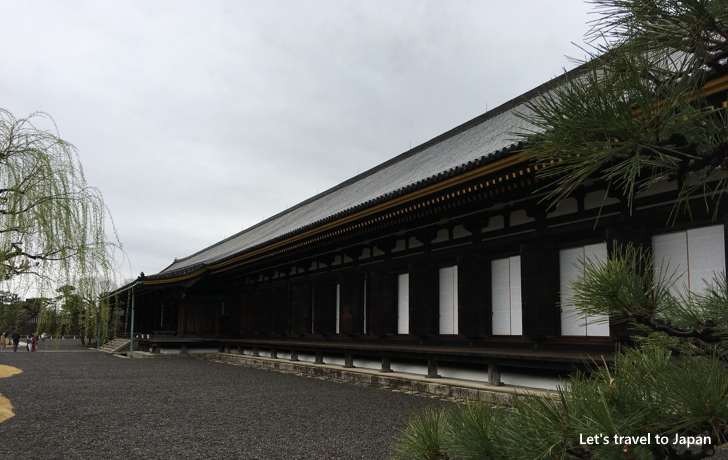Highlights and access methods of Sanjusangendo Temple (Kyoto Prefecture)
In this article, we will explain the attractions of Sanjusangendo Temple in Kyoto Prefecture and how to access it for those who are traveling to Japan from overseas.

(Last modified: )
(Prefecture : Kyoto , Category : Temples)
Table of contents
About Sanjusangendo Temple
Sanjusangen-do, located in Kyoto, Japan, is a renowned Buddhist temple built in the 13th century. It is famous for housing 1001 statues of Kannon, the Goddess of Mercy, with the principal statue being a national treasure. The temple's name, which means "Hall with Thirty-Three Spaces," refers to the unique architectural design featuring 33 bays between the pillars. This sacred site offers a tranquil and spiritual atmosphere, attracting tourists and pilgrims alike to admire its remarkable artistry and historical significance.
Highlights of Sanjusangendo Temple
Sanjusangendo, located in Kyoto, Japan, is a remarkable and spiritually enriching destination that offers tourists an insight into the country's rich religious history and artistic heritage. The temple, whose full name is Rengeo-in, was built in 1164 and is renowned for its impressive main hall, which measures approximately 120 meters in length, making it the longest wooden structure in Japan. Sanjusangendo is an ideal destination for visitors seeking to explore Japanese Buddhism and appreciate the exquisite craftsmanship of the period.
One of the main attractions of Sanjusangendo is the breathtaking collection of 1,001 life-size statues of Kannon, the goddess of mercy, housed within its main hall. The statues, made of Japanese cypress and covered in gold leaf, are an awe-inspiring sight that demonstrates the remarkable skill and devotion of the craftsmen who created them. At the center of the hall stands a large, seated statue of the Thousand-Armed Kannon, surrounded by the 1,000 standing statues, which are arranged in 10 rows and 50 columns.
In addition to the Kannon statues, Sanjusangendo also features 28 guardian deities, each with its own unique and intricate design. These statues represent a fusion of Buddhist and Hindu iconography and are considered important cultural treasures. Visitors to the temple can also admire the beautiful wooden carvings and artwork that adorn the temple's interior, further showcasing the artistic mastery of the time.
As for the best season to visit Sanjusangendo, the temple can be appreciated throughout the year, as its main attractions are located indoors. However, visiting during the winter season, specifically in January, offers tourists an opportunity to experience the Toshiya Archery Contest, a traditional archery event held on the temple's grounds. This event, which dates back to the 17th century, showcases Japan's long-standing tradition of archery and adds a unique cultural experience to a visit to Sanjusangendo.
In summary, Sanjusangendo is an awe-inspiring and culturally rich destination that offers visitors an opportunity to explore Japan's religious and artistic history through its extraordinary collection of statues and exquisite craftsmanship. With its remarkable main hall and unique events like the Toshiya Archery Contest, Sanjusangendo provides a memorable and spiritually uplifting experience for tourists seeking to delve into the heart of Japanese Buddhism and cultural heritage.
Address and access method of Sanjusangendo Temple
Sanjusangen-do Temple is located at 657 Sanjusangendo Mawari, Higashiyama Ward, Kyoto, 605-0941, Japan.
The nearest train station to the temple is Shichijo Station on the Keihan Main Line. From Shichijo Station, it's approximately a 10-minute walk to the temple. Alternatively, you can also take a bus from Kyoto Station and alight at the "Hakubutsukan-Sanjusangendo-mae" bus stop, which is just a short walk away from the temple entrance.
Attractions near Sanjusangendo Temple
Several notable attractions are located near Sanjusangendo Temple:
Kiyomizu-dera Temple
A famous UNESCO World Heritage Site, this historic Buddhist temple is known for its wooden stage, offering panoramic views of Kyoto and the surrounding area. The temple grounds are particularly beautiful during cherry blossom and autumn foliage seasons.
Fushimi Inari Shrine
One of Kyoto's most iconic sites, this Shinto shrine features thousands of vibrant orange torii gates, creating a picturesque and mesmerizing path up Mount Inari.
Gion District
A famous geisha district, Gion is filled with traditional wooden machiya houses, tea houses, and shops. Stroll through the charming streets to get a glimpse of Kyoto's history and culture.
Tofuku-ji Temple
Another historic Buddhist temple, Tofuku-ji is renowned for its beautiful Zen gardens and stunning autumn foliage, attracting many visitors during the fall season.
Kyoto National Museume
Just a short walk from Sanjusangen-do, this museum displays a vast collection of Japanese art and artifacts, providing visitors with an opportunity to learn more about Japan's history and cultural heritage.
Other information about Sanjusangendo Temple
Official site (Japanese only) about Sanjusangendo Temple :

Pictures about Sanjusangendo Temple :


-- --
Thank you for reading to the end.
( Written by Tatsuo Ikura )